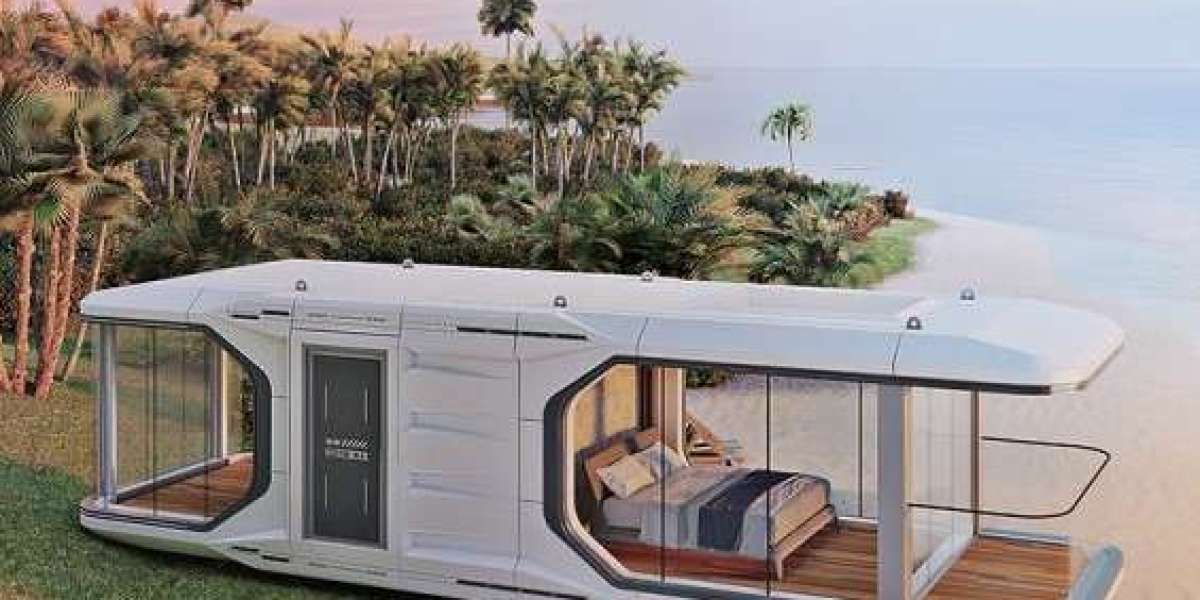Capsule Houses: Compact Living for the Future
As urban populations grow and available space shrinks, architects and designers are reimagining the way we live. One of the most innovative and space-efficient solutions to emerge is the capsule house—a compact, modular living unit designed to provide all the essentials of a home within a tiny footprint. Though the concept has existed for decades, recent interest in minimalism, sustainability, and affordable housing has brought capsule houses back into the spotlight.
What Is a Capsule House?
A capsule house is a small, prefabricated living unit that offers a highly efficient layout within a compact space—often ranging from 25 to 100 square feet. Originally developed as part of the Metabolist Movement in Japan during the 1960s and ’70s, capsule housing was envisioned as a futuristic response to urban overcrowding and transient living.
The most famous example is the Nakagin Capsule Tower in Tokyo, built in 1972 by architect Kisho Kurokawa. Each capsule in the tower functioned as a small apartment, complete with a bed, bathroom, storage, and even a television. The building’s modular design allowed individual capsules to be replaced or reconfigured over time—though in reality, the execution of this idea fell short due to maintenance issues and lack of upgrades.
Today’s capsule homes have evolved from that early experiment, incorporating modern materials, smart technology, and improved design to create livable, efficient, and often stylish micro-homes.
Why Capsule Houses Are Gaining Popularity
1. Urban Housing Shortages
Major cities across the world are struggling to accommodate rapidly growing populations. Capsule homes offer a high-density housing solution that can fit more living units into smaller plots of land. This is particularly useful in urban centers where traditional housing developments are either unaffordable or spatially impractical.
2. Affordability
Compared to traditional apartments or homes, capsule houses are far more affordable to build and maintain. The reduced size and prefabricated construction process help lower costs, making capsule homes an attractive option for students, low-income residents, or individuals seeking minimalist lifestyles.
3. Sustainability
With fewer materials used and less energy required to heat, cool, and maintain the space, capsule homes are environmentally friendly by design. Many incorporate sustainable features such as solar panels, energy-efficient lighting, and composting toilets.
4. Flexibility and Mobility
Capsule homes can be built off-site and transported to different locations, offering a level of flexibility that traditional housing can’t match. This makes them ideal for temporary housing, pop-up accommodations, or even mobile living.
What’s Inside a Capsule Home?
Despite their small size, modern capsule homes are surprisingly functional. Designers make the most of every inch of space, often using multi-purpose furniture, foldable beds, hidden storage, and compact appliances to maximize livability.
A typical capsule unit may include:
A sleeping area (sometimes with a fold-out bed or mattress platform)
A small bathroom or access to shared sanitary facilities
A kitchenette or mini-fridge
Storage shelves or built-in cabinetry
A work desk or small table
Smart home features for climate control, lighting, and security
In larger or more premium capsule homes, you may even find high-tech amenities like voice-activated controls, integrated sound systems, and modular attachments that expand the space or functionality.
Real-World Applications
1. Micro-Apartments
Cities like Tokyo, Hong Kong, and New York have embraced the concept of micro-apartments—often capsule-like in design—as a solution to soaring rent prices. These are frequently located in central urban areas, allowing residents to live affordably near their workplaces and amenities.
2. Disaster Relief and Emergency Housing
Capsule homes are ideal for quick deployment in areas affected by natural disasters. Their modular, lightweight structure allows them to be transported and assembled rapidly, providing immediate shelter to displaced populations.
3. Student and Worker Housing
Educational institutions and employers in expensive cities are beginning to offer capsule-style accommodations to students and employees. These units provide a private, affordable alternative to dormitories or shared apartments.
4. Tourism and Short-Term Stays
Capsule hotels—common in Japan—offer ultra-compact sleeping pods for travelers seeking a budget-friendly, no-frills stay. These pods typically include basic sleeping arrangements, a shared bathroom, and secure lockers for personal belongings.
Pros and Cons of Capsule Living
Pros:
Cost-effective: Lower rent or purchase price
Space-efficient: Smart use of limited space
Sustainable: Lower energy use and carbon footprint
Minimalist lifestyle: Encourages decluttering and simplicity
Flexible: Can be moved or stacked modularly
Cons:
Limited space: May not suit everyone, especially families
Lack of privacy: Especially in shared capsule hotels or dormitory-style settings
Zoning restrictions: Local building codes may limit capsule housing options
Maintenance issues: Tiny spaces require high-quality ventilation and sanitation
The Future of Capsule Houses
As the world grapples with population growth, housing shortages, and climate change, capsule homes offer a scalable and efficient solution. They may not replace traditional houses, but they represent an important alternative for specific demographics and scenarios.
Innovations in 3D printing, AI-driven design, and smart home integration are likely to enhance the functionality and appeal of capsule living even further. Future capsule homes may not just be about saving space—they could also redefine the way we interact with our environment, our belongings, and each other.
Final Thoughts
Capsule houses are more than just small spaces—they’re a big idea for modern living. In a world where bigger isn’t always better, these compact dwellings challenge us to rethink our needs, prioritize quality over quantity, and embrace a lifestyle that values efficiency, innovation, and sustainability.
Whether you're a city dweller looking for affordable housing, a digital nomad seeking flexibility, or a developer aiming to build smarter cities, capsule homes may just be the future of housing—small in size, but immense in potential.














